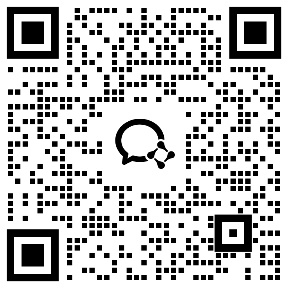
有关英文说课稿模板7篇
作为一位兢兢业业的人民教师,时常需要编写说课稿,写说课稿能有效帮助我们总结和提升讲课技巧。怎么样才能写出优秀的说课稿呢?以下是小编精心整理的英文说课稿7篇,欢迎大家借鉴与参考,希望对大家有所帮助。

英文说课稿 篇1
一、 说课标
新课程标准的三维教学观,具体到英语学科就是要整合发展学生语言技能、语言知识、情感态度、学习策略和文化意识五个方面的素养,培养学生综合运用语言的能力。指出:“教师在教学才过程中应与学生积极互动、共同发展。教师应尊重学生的人格,关注个体差异,满足不同学生的学习需要,创设能引导学生主动参与的教育环境,激发学生的学习积极性,培养学生掌握和运用知识的态度和能力,使每个学生都能得到充分的发展。因此,本课的设计重点是:帮助学生形成自主、合作、探究的学习模式,掌握阅读的一些基本技巧,让每个学生在原有的基础上都学有所得。
二、说教材
(一) 教材地位和教学内容分析 本课是高一必修模块1第4单元的阅读课型,这单元围绕earthquakes这一主题开展听、说、读、写多种教学活动。Reading设计为本单元的第2课时。本课型是单元整体教学的重要环节,为学生的语言学习、语法学习提供了载体,并且是学生获取信息的主要来源。“Reading――― A NIGHT THE EARTH DIDN’T SLEEP” 具体描写1976年唐山大地震的震前、震中和震后。本篇文章词汇量大,运用了大量的动词、复杂的数字,出现许多定语从句,篇幅较长,并且采用一些修辞手法,对学生的语言阅读能力提出了更高的要求。但文章的结构较明显,较容易归纳出各部分的中心词。
(二)教学目标
1. 语言知识目标:
a)使学生了解自然灾害的相关词汇,并掌握复杂数字的表达法。
b)学习掌握与地震相关的词汇,如:shake,well,rise,smelly,pond,pipe,burst,canal,steam,ruin,injure,destroy,brick,dam,useless,steel,shock,quake,rescue,electricity,disaster,army,organize,bury,coal,mine,shelter,fresh,percent等,以及 right away, at an end, dig out, give out, thousands of以及一些优美句子的赏析。
2. 语言技能目标:
a)阅读技能的训练:让学生学会克服生词障碍,通过略读,归纳出文章的大意;通过细读,理清文章的总体框架与脉络,归纳出各部分的中心词;通过查读,捕捉文章的重要细节,培养学生获取、处理信息的能力。
b) 让学生复述课文,分析、感悟作者的写作意图。
c) 让学生运用本节课所学词汇、知识,通过采访唐山大地震幸存者的形式进行小组活动,提高学生用英语进行创造性交流的能力。
a)学会有关地震的知识,并能通过学习讨论懂得地震时的应急逃生,地震后如何科学救人和有关地震的形成和减少地震所造成的损失等一般知识。
b)懂得地震无情人有情,即使发生了多么可怕的灾难,国家和解放军官兵都会不顾自身安危,奋力抢救,培养学生一方有难、八方支援的互助友爱精神。
c)了解自然灾害会给人类带来严重的破坏性后果,让学生进一步感悟、领会到人类应与自然界和谐共处。
d)培养学生的合作意识和“合作学习”的习惯。
e)欣赏课文中优美句子,了解一些英语修辞手法,使学生在学习完课文之后得到一次美的享受,一次心灵的愉悦和升华。
(三)教学重点和难点:
1. 重点
1)让学生了解唐山大地震,了解地震的成因、预兆、地震造成的损失,地震时的应急救生以及震后的救援。
2)训练学生的阅读技巧,提高阅读能力。侧重培养学生对文章的整体性结构的把握和挖掘作者写作的意图,突出培养学生以下3个方面的能力:
a.文章段落中心词把握能力。
b.根据主题快速捕捉文章重点细节的能力。
c.总结归纳能力。
3)重点掌握有关地震的词汇,特别是shake, burst, ruin, injure, destroy, shock, quake, rescue, disaster, army, organize, bury, shelter。 4)欣赏并理解课文中优美句子,让学生掌握一些英语修辞用法。
2.难点
1) 如何使学生养成科学的阅读习惯,提高阅读理解能力和语言水平。
2) 如何使学生学会提取、筛选和重组文章中的信息,并灵活运用于语言实践中,达到语言实践能力的扩展与提高。
三、 教学方法
1、任务型语言教学法 任务型语言教学认为:人们使用语言的过程就是一个完成各种各样任务的过程。任务型学习强调通过“做中学”、“学中做”,使学生在完成任务的过程中习得语言。本课组织学生四至五人组成一个学习小组,进行一次就地震后幸存者的访问。该设计基于课文内容,但又不局限于课文的范畴,旨在贯彻“做中学”、“学中做”策略,吸引和组织他们积极参与,并通过讨论、交流和合作等方式,在自然、真实的情境中,完成任务,体会、掌握语言的应用,达到学以致用的目的。
2.直观法(视听教学法) 充分利用多媒体教学手段,通过播放影视剪辑,与课文主题相关的图片、图表等直观手段,在充分调动学生学习兴趣的同时,降低学习难度,突破重难点。
3.合作学习教学法 合作学习教学法是以小组活动为主体的一种教学活动,一种同伴之间的合作互动活动。合作学习教学法有利于改善课堂心理气氛、大面积提高学生的学业成绩、促进学生良好非智力品质的发展,调整学生的语言焦虑感。因此,本课打破传统的教师单向灌输,采用“四至五人组成一个学习小组”的课堂教学结构,来组织教学,旨在营造轻松的学习氛围,为积极学习提供有利的条件,让学生在完成任务的过程中通过互相交流,降低语言焦虑感,获得愉快的学习经历,从而对学习本身和所学内容产生兴趣感。
四、教学过程
STEP1 导入 lead-in 在课堂开始,我会给学生播放一段有冯小刚导演拍的电影《唐山大地震》的'片段节选,让学生能通过电影能理解和体会到自然灾害给人类带来的巨大灾难。让后直接导入今天的课题。这个能激发学生去了解这篇文章的兴趣,积极加入课堂。
Step2 pre-reading 读前 在这个环节我会在学生在读这篇文章之前给出几个问题。但是并不要求学生马上给出答案。而是要求在下一环节的阅读中找出答案。
Step3 while reading 在这个环节当中我设计了3个活动 第一个活动 activity1 fast reading 给学生几分钟的时间,让后让学生快速阅读这篇文章,并找出在读前所给题的答案,在读完文章之后,让几个同学来进行回答。 第二个活动 activity2 scanning 放录音,让学生跟随录音快速阅读,并要求学生找出每一段落的中心句,并在读完之后,要求得出这篇文章的整体大意。并让学生起来进行回答 第三个答案:acrtivity3 task 在这一环节当中我会设计一个任务。任务类型为知识的抢答。 首先我会将整个班级分为若干个小组,每组有七到八个人。并选出小组长。这一环节中我设计了十个对错题,(true or false),要求学生以小组的形式进行抢答。并作出得分记录,最后还要评选出第一名。在抢答过程当中,我并不只单单是以游戏的形式来完成这一任务,只是简单的完成对错题,我会要求每组在抢答的过程当中,要对他们所选的答案进行解释说明为什么。让学生在这个过程当中真正玩有所得。
Step 4 post-reading 这一环节我会把我们所读的这篇文章设计成一篇阅读题的模式,设计五道选择题,用幻灯片展示出来,并让学生进行选择。题目的设计会以文章的主旨大意和一些细节作为试题。这让学生能在这一环节当中对刚刚已经学习知识进行巩固。
Step5 summary 在这一环节中我会整堂课做一个简短的总结,并再一次强调本次课的重难点。让学生明确本课的重点,再一次明确课堂目标。和引导学生对这篇文章的情感态度进行升华。
Step6 homework 作业
1、要求学生背诵本次课的重点词汇和短语
2、要求完成相应联系。
3、要求学生课后通过各种途径查到关于地震的常识,并去了解一些
英文说课稿 篇2
Background of English teaching in primary school: It is not a long history that English is as a subject in primary school in our country and the main instructional aims of teaching English in primary school is to cultivate pupils’ basic abilities of their listening and speaking and their good sense of the English language. Our boys and girls are exposed to English for the first time, so it is very important to develop their keen interest in English.
I. Contents:
Today I’m going to talk about Part B of Unit 2, PEP Primary English, Book 3. This lesson includes two parts: Let’s talk and let’s practice. In section 1, it mainly deals with the dialogue about “What’s in the schoolbag?” and the answers. And in section 2, it provides a real situation for the Ss to prastise the pattern: How many +n.(pl.)+ do you have? And the answer: I have 23 +n.(pl.)
II. Teaching aims
1. Aims on the knowledge
(1) To enable the Ss to understand and speak: “My schoolbag is heavy. What’s in it? Thank you sooooooo much.” Make sure that Ss can use these sentences in real situations.
(2) To help Ss to finish the survey.
(3) Let Ss finish the assessment of “Let’s check” in this unit.
2. Aims on the abilities
(1) To develop Ss’ abilities of listening and speaking.
(2) To train the Ss’ ability of working in groups.
(3) To foster Ss’ abilities of communication and their innovation.
3. Aims on the emotion
(1)To foster Ss’ consciousness of good co-operation and proper competition.
(2) To lead Ss to show their loveliness to the poor.
III. Key-points of this lesson
(1) To help Ss ask and answer the question: What’s in it?
(2) To enable Ss to study in groups and co-operate skillfully.
(3) To develop Ss’ interest in English.
IV. Difficult points
(1) To help the Ss ask and answer the question “What’s in it?” and make sure they can use the plural nouns correctly.
(2) To finish the survey by themselves.
V. Teaching methods
As we all know: the main instructional aims of learning English in primary school is to cultivate pupils’ basic abilities of listening and speaking and their good sense of the English language. So in this lesson I’ll mainly use “Task-based” teaching method. That is to say, I will let the Ss learn in real situations, finish a task by making a survey to help the Ss to get a better understanding of the key structure of the dialogue. I will arrange four kinds of activities: singing, guessing game, finishin
g a survey and having a competition. And in this lesson a recorder, CAI, school things and a printed form will be needed. Students should prepare some school things.
VI. Teaching procedures and purposes of my designing.
I’ll finish this lesson in five steps.
Step 1. Warm-up and preview
1. Free talk between T and Ss about things in the classroom.
2. Sing the song together: Books and pencils.
3. Do some TPR, for example: Show me your English book. Show me your crayon.
4. Review the numbers by asking: “How many crayons do you have?”
Purpose: It is important to form a better English learning surrounding for the Ss by singing and doing some total physical response and at the same time it provides situations to review learned knowledge for the next step.
Step 2. Presentation
Now I’ll mainly talk about this step.
1. Present the pattern: “My schoolbag is heavy.” “What’s in it?.”
(1) Show a bag and say: “Look! I have a bag.” Carry it and say: “Oh, it is heavy. My schoolbag is heavy.” Help the Ss understand the meaning with the help of my body language. Then lead the Ss to read the sentence. Make sure they can say it correctly.
(2) T: My schoolbag is heavy.
Open the bag and say: “What’s in it? What’s in my schoolbag?”
Take out a Chinese book. Then do the action again. Let the Ss read the sentence.
2. Play a guessing game. Divide the whole class into four groups to have a competition.
Let them guess: What’s in the bag? How many? Purpose: To present the key structures one by one is much easier for the Ss to learn and grasp the meanings. Proper competition can arouse the Ss’ interest in English learning.
3. With the help of the CAI to present the dialogue. Set a situation to help Ss understand: Two Ss are coming. One girl is carrying a heavy bag on her back. They are talking.
Girl: My schoolbag is heavy.
Boy: What’s in it?
Girl: 20 story-books, 32 pencil, 9 rulers, 12 crayons and 30 picture-books. Etc.
Boy: What will you do?
Girl: They are for the poor.
Boy: Great! I’ll bring some school things too.
The boy comes back home and puts a lot of things into the bag. Then he goes to school again and gives them to a teacher. While he is taking them out, he is counting the numbers of all things. The teacher says: Thank you soooooooo much.
4. Mention that we should take care of the poor.
5. Play the cassette. Let the Ss listen and imitate the dialogue.
Pay attention to their pronunciation and intonat
ion. Purpose: CAI can provide a real situation for the Ss to understand the dialogue and the relationships between people better. Tell the Ss we should show our loveliness to the Ss.
Step 3. Practice
Divide Ss into groups of six children. Each one would finish the printed form by asking and answering: How many storybooks do you have? Find out which group finishes faster. Story books picture-books sharpeners crayons pencils erasers pencil-cases rulers Chen Jie 8 24 3 32 26 4 1 3 Purpose: Task-based teaching method is used here to develop Ss’ ability of communication and also their ability of co-operation will be well trained.
Step 4. Assessment
Help Ss finish “Let’s check” of this unit and workbook.
Purpose: To check the knowledge Ss have learned in this period.
Step 5. Add-activity
1. Let Ss tell each other how many school things they have after class. Tell their parents how many school things they have at home.
2. Take care of everything they have.
Purpose: Revision is so important that Ss should speak English as much as they as in class or after class. It is necessary for the Ss to do some extensive exercises after class to consolidate the knowledge they learned.
英文说课稿 篇3
《My home》是小学英语四年级上册的第四单元。本单元的教学内容都是围绕"家"这一学生喜闻乐见的主题展开的。本节课是第四单元的第一课时,教学内容是要学习有关房间的五个单词及进行简单的对家的介绍,本课时是本单元的重点,所以首先应让学生掌握各个房间的名称,再通过Let’s do等TPR活动进行巩固操练,本节课掌握的好坏程度,直接会影响到本单元后阶段有关"描述和询问东西在哪里"的对话和故事的掌握,因此在本单元教学中具有举足轻重的地位。
Theaching goal:
1.能够听、说、认读五个有关房间的单词 study, kitchen, bedroom, bathroom, living room.
2.能够用This is my home. You can see a living room…句型简单介绍房子。
3.能够听懂"Let’s do"的指令,并做出相应的动作。
4. 培养学生对家的热爱,提高学生的口语表达能力和交际能力。
Theaching key:
熟练认读有关房间的五个单词。
Theaching difficulty:单词bathroom, living room,的正确发音。
Theaching aid: Cards Tape recorder CAI
Theaching method: TPR Pairwork Groupwork
Theaching steps
Step 1 Warm-up
1. Good morning. Boys and girls. How are you? Nice to meet you.
2.Let’s sing《In the Classroom》,OK?
Step 2 Preview
1.Show the CAI(door ,window) What’s this? This is my home, there are many room are there? Do you visit my home? Now, let’s study Unit4 《My Home》。
Step 3 Presentation
1.(Show the CAI)。 This is my home, you can see a bedroom, a living room, a study ,a kitchen and a bathroom
2.Look ,what’s this?(客厅) There are five words on the blackboard, listen to me and guess, which word is "living room"?Teach"living room". There is a TV in the living room. What can you do in the living room? Teach"watch TV".Chant "living room,living room , watch TV."
3.(Show the CAI)。 .Look ,what’s this?(书房) Listen to me and guess, which word is "study"?Teach"study". There are many books in the study. What can you do in the study? Teach"read a book".Chant "study,study, read a book".
4.(Show the CAI)。 .Look ,what’s this?(厨房) Listen to me and guess, Which word is "kitchen"?Teach"kitchen". What can you do in the study? Teach"have a snack".Chant "kitchen ,kitchen,have a snack".
5.(Show the CAI)。 .Look ,what’s this?(bathroom) Listen to me and guess, which word is "bathroom"?Teach"bathroom". What can you do in the bathroom? Teach"take a shower".Chant "bathroom ,bathroom ,take a shower".
6.(Show the CAI)。 .Look ,what’s this?(bed ) What’s this? (room) What’s this? (bedroom)Teach"bedroom". There is a bed in the bedroom. What can you do in the bedroom? Teach"have a sleep".Chant "bedroom bedroom, have a sleep"
7.Listen to the tape and read after the tape.
8.Let’s do.
Show the "Go to the ", put the "living room, study , kitchen, bathroom, bedroom" on, then T act "Go to the living room, watch TV. Go to the study, read a book. Go to the kitchen,have a snack. Go to the bathroom ,take a shower. Go to the bedroom, have a sleep".
Now let’s do, ok? Follow me.
Step 4 Practice
Now, this group is team one, this group is team two. Let’s go,ok?
1.炸地雷: Let’s play a game, Ok? Who can read? Read together.
2.Close your eyes, what’s missing? Guess, then tell us.
3.Now,look at the screen, Guess, what’s this? (Show the CAI ) The student guess.
4.look, this is my home,you can see a bedroom, a living room, a study ,a kitchen and a bathroom.
Who can do like me ? Tell us what’s your room like?
The students look and say.
Homework:
1.Tell your home to your friend.2. Prepare the"Lets talk."
五、Blackblard design:
Unit4 My Home
living room watch TV
study read a book
kitchen have a snack
bathroom take a shower
bedroom have a sleep
英文说课稿 篇4
Today I’m going to talk about lesson 62 of Unit 11, NEW START Primary English, Book
7. This lesson includes three parts: “listen and number”“ask and answer” and “let's write” .
First. Aims on the knowledge
(1) To make students understand and speak: :“Eiffel tower、Disneyland、Big ben、Opera house.and what is his city famous for”
(2) To help Ss to finish the blank. In page 23.
2. Aims on the abilities
(1) To develop Ss’ abilities of listening and speaking.
(2) To develop the Ss’ ability of working in groups..
3. Aims on the emotion
(1) To lead Ss to show the famous building in their hometown,develop their country emotion.
Second. Key-points of this lesson
(1) To help Ss ask and answer the question: What is his city famous for?
(2) To make Ss to study in groups and develop Ss’ interest in English.
3.rd. Difficult points
To help the Ss ask and answer the question “What is his city famous for?” and make sure they can use it。.
V. Teaching methods
As we all know: the main instructional aims of learning English in primary school is to improve the abilities of listening and speaking and their good sense of the English language. So in this lesson I’ll mainly use “Task-based” teaching method. That is to say, I will let the Ss learn in real situations, finish a task by making a survey to help the Ss to get a better understanding of the key structure of the dialogue. I will arrange(安排、准备) four kinds of activities: singing, guessing game, finishing a survey and having a competition(竞赛). Students should prepare(准备) some school things(学具). VI. Teaching procedures(程序)。
I’ll finish this lesson in six steps.
Step 1Step 2. Step 3. Step 4.Step 5. Step 6.
1. chant 听录音,一边拍手一边唱
2. 出示人物图,进行提问:Where is he live / she?
Where does he / she come from? Where does he / she live?
回答出单词即可,复习上一课词汇。
老师:Binbin comes from China. He lives in Beijing.
Do you know what is Beijing famous for?
Beijing is famous for Tian’an man square.
What else do you know about Beijing.
请学生说出北京的一些著名景点
a) 出示各景点卡片,带读正音。
b) 完成Part A Write the number 后订正答案 c) 两人一组利用图片做国家和城市的游戏
…is famous for ……或……is in ……
Tokyo is famous for cherry blossom.
Cherry blossom is in Tokyo.
4.提问:Where does …come from?
Where does he /she live?
What is his /her famous for?
请学生回答,老师出板书,带读。
做问答练习
5.These are Pen’s Pal . Which pen pal do you want to have? 让学生用一张卡片进行练习
英文说课稿 篇5
Good afternoon, everyone, It’s my great pleasure to be here sharing my lesson withyou.The content of my lesson is Senior English for China Book1B Unit 16 Scientists at work. I’ll be ready to begin this lesson from five parts. Analysis of the teaching material, the teaching methods, the studying methods, the
teaching procedure,and Blackboard design.First, let me talk about the teaching material.
Part 1 Teaching Material:
This unit is about science and scientists. By studying of this unit, we’ll Enable the students to know the serious attitude towards science and develop the interest in science. At the same time ,Let the students learn how to give instructions. this lesson plays an important part in the English teaching in this unit.This is an important lesson in Book One. From this lesson, it starts asking the Ss to grasp contents of each passage. Therefore, this lesson is in the important position of the teaching material. If the Ss can learn it well, it will be helpful to make the Ss learn the rest of this unit.As we all know ,reading belongs to the input during the process of the language learning. The input has great effect on output , such as speaking and writing . According to the new standard curriculum and the syllabus (新课程标准和教学
大纲), after studying the teaching material and analyzing the rule of children’s growing of mind,I think the teaching aims are the followings:
1.Knowledge objects:
a)The Ss can hear, read, and use the main sentence patterns b)The Ss can understand the content of the lesson.
c)The Ss can use the patterns to express their thoughts in the proper situation.
2.Ability objects:
(1) To develop the Ss’ abilities of listening, speaking, reading and writing.
(2) To train the Ss’ ability of working in pairs.
(3) To Improve the student’s reading ability, especially their skimming and scanning ability.
3.Emotion or moral objects:
a)By completing the task,the Ss increase their interest and set up self-confidence in science;
b)Teach the Ss what is “science”, put the moral education in the language study.
now,let’s come to the Important points and the Difficult points.
Well, how to achieve the teaching objects better, how to stress
the important points and break through the difficult points? As is known to us all,The modern teaching demands the teacher should improve the students’ ability. A good teaching method requires that the teacher should have the leading effects. According to the analysis of the teaching material and the students’learning background ,I will use the following methods .
Part 2 Teaching Methods:
In my opinion,the main instructional aims of learning English in the Middle School is to develop the students’ abilities of listening, speaking, reading, writing and their good sense of the English language. So in this lesson I’ll mainly use “Communicative” Approach(交际教学法), “Whole language
teaching” (整体语言教学法)and “Task-based” language teaching (任务教学法). That is to say, I’ll let the Ss to get a better understanding of the key structure of the dialogue. According to the modern social communication teaching theories(现代社会交际教学理论), I adopt the TSA method(情景教学) and TBLT method (语言任务教学)in my teaching, namely Total Situational Action and Task-based Language Teaching.The former is a “scene —
activity” teaching method .It establishes a real scene and the interaction between the teacher and the Ss . The latter offers the Ss an opportunity to complete the tasks in which Ss use
language to achieve a specific outcome. The activity reflects real life and learners focus on meaning, they are free to use any language they want.At the same time, I’ll make use of the modern electricity teaching equipments and all kinds of teaching means, it can develop the Ss creativity in learning English.
英文说课稿 篇6
一.说教材:
《birthdays》是译林英语五下的最后一个单元。本课时主要讲授的是第一板块Story time的内容。主要围绕“过生日”这一话题,通过问询和讨论在生日里所做的事情展开对话。
教学大纲对Story time的要求是通过对话、短文、故事等,帮助学生掌握基本的英语语言知识,发展基本的英语听、说、读、写技能,初步形成用英语与他人交流的能力,进一步促进思维能力的发展,同时提高学生的综合人文素质。所以本课的主要目标是培养学生灵活运用所学知识进行语言表达的能力。
二.说教学目标:
针对这些要求,我设定了本课时的教学目标是:
1. 学生能流利朗读并理解story time。
2. 学生能听懂、会读句型" When's your birthday? It's on the eleventh of May. It's on the eighth of April."
3. 学生能运用句型"What do you do on your birthday? I usually..."正确问答生日活动。
而本课有比较明显的中西文化区别,所以针对这一特征,设定情感和文化目标为:
1. 能理解中西方生日文化的去别和融合。
2. 能懂得感恩父母。
三:说教学方法:
教法:
1. 问答式教学法:它能充分发挥师生两方面的积极性,用此法可启发学生思维,培养学生分析问题、解决问题的能力和口头表达能力,激发其学习的主动性、积极性。
2. 讨论式教学法:通过对教学主题的自由讨论,得出在生日经常做的事情。在讨论的过程中运用所学的语言。不仅能帮助学生正确运用语言,也能创建比较自由舒适的课堂环境。
3. 情境教学法:给学生创建比较真实的语言环境,在情境中学习课文的内容。
学法:
1. 听选法:要求学生在听的过程中完成信息的采集。帮助学生锻炼听取信息的能力。
2. 速读法:以快速阅读为基础,找出与给出主题相关的内容,帮助学生练习泛读能力。
3. 精读法:细读课文,找出细节内容。在这一部分,学生需要对课文进行分析,并找出正确的答案。锻炼学生对文本的分析运用能力。
四:说教学过程:
本课时是本单元的第一课时,主要教学过程如下:
课前活动:
一、热身活动
为了帮助学生进入学习状态,设计如下的课前活动。
1. 解释卡片和奖励机制。
2. Listen to the song< Happy birthday to you>
3. Say a chant< The months chant>
二、引入课题
1. 正是上课,首先出示本课的学习目标,让学生对本节课需要掌握得内容有比较清晰的了解。
2. 讨论月份,引入主题。
T: boys and girls. There are twelve months in a year. Which month do you like best?
S: I like…
T: I like October best. Because my birthday is in October. Do you want to know?
You can ask“ When’s your birthday? ”引入生日讨论。
连读,板书。
Put in order
先出示打乱的生日活动,观看听老师的生日活动,然后完成排序练习。
以上引入课题:birthdays
三、处理文本
为了帮助学生锻炼听、说、读的能力,设计了如下的处理文本的活动。
a. (放视频,完成连线)
b.听录音,说出所做的事情。(板书)
c. 速读课文,找出Mike做的事
d. 精读
Read the text carefully and try to find the answers.
1)Who do they spend their birthdays with?(他们和谁一起度过生日?)
2)What do they eat?
文化渗透:Chinese people usually spend their birthdays with their families, they often eat noodles. Western people usually spend their birthdays with their friends, they often eat birthday cakes.
3)T: They do different things on their birthdays.
Are they happy on their birthdays?
S: Yes.
How can you know?
找出句子: We have a great time. We have a lot of fun.
四、练读课文。
练读课文时比较枯燥的,所以设计了多样的练读方法。
1)跟读,注意语音语调,特别是重音。
2)三人多样练读,请两组示范。
3)齐读。
五、复述课文
复述课文是比较有效的检验学生是否掌握课文内容的方法,所以在本部分设计了逐层递进的复述方法。
1)看板书,复述。
2)去掉动词词组,复述。
六、你的生日
让学生正式运用本节课所学的知识,进行丰富的讨论活动。
T: We know Su Hai, Su Yang and Mike’s birthdays. Now, it’s your turn to share your birthdays.
1)提供表格,让学生先选一选。
2)根据选择,和同桌说一说。
3)请学生说一说。
文化渗透:随着时代的发展,中国的生日文化已经吸纳了很多西方元素,中西方生日文化的差异已经不是很明显了。
T: Now we also eat birthday cakes and have a birthday party with our friends. So with the development of the world, the differences between China and western countries are getting smaller and smaller.
七、情感教育
帮助学生学会感恩父母并且对本课的内容进行书写训练。
Your birthdays are wonderful. Your parents remember your birthday and prepare a lot of presents for you. But I have a question. Do you know your parents’ birthdays. Who knows? Hands up! Not all of us know the birthdays of our Parents. But our parents is the most important people in our life. Boys and girls, Let’s design some birthday activities for your parents’ birthdays. Write down your ideas.
八、评价和回家作业
针对上课是出示的学习目标,让学生对自己这节课的学习效果进行评价和反馈。知道自己的薄弱点在哪儿。针对这些评价内容,设计回家作业。
(必做)1. Listen to the tape and read after it three times.
2. Write down more ideas for your parents’ birthdays.
(选做)1. Try to retell the story.
2. Write down your parents’ birthday dates.
五:说板书
本课的板书采用了和课文相关的蛋糕和面条,并在上面贴上对用人物的活动词组,辅以头像帮助理解。非常的生动,让学生对本课的内容有比较直观的理解。
英文说课稿 篇7
Dealing with trouble
Good morning/afternoon everyone, I’m NO ----. it’s my great honor to present my lesson here. Today, I’m going to talk about the reading part of chpter 3 from Oxford English 8A, Shanghai Education Press. The title of the reading passage is “Dealing with trouble” . To make my presentation much clearer, I’d like to divide the teaching structure inti 5 parts: analysis of teaching material, analysis of students, analysis of teaching and learning methods, teaching procedure and blackbored design. Now I am about to present them one by one.
1.Analysis of teaching material
The first part is the analysis of teaching material
This text is about a diary of a boy, which content is focused on how the boy’s father dealt with a trouble. This kind of topic is related to Ss’ daily life, so the Ss will love to read the dairy and desire to speak out their ideas. That’s say, the text offer a good chance for Ss to improve reading skills and their spoken English. Besides, Ss are going to learn some new words and phrases from the text, which are helpful for their further English study in future. According to the students’ English level and the demands of the New Standard English, I divide my lesson objectives into three categories: knowledge objects,ability objects and moral objects. in the first place, knowledge objects include to learn new words and key expression by guessing and teacher’s guidance; to grasp the general idea of the whole passage and be able to retell the main idea of the passage; to get familiar with the simple past tense.
Ability objects contain to improve Ss’ ability of getting imformation by scanning and skimming; to develop Ss’ ability to describ an event that happened in our daily life; and cultivate Ss’ ability to discover, analyze and solve problem.
At last moves to moral objects. The moral objects are to cultivate Ss’ awareness to help people who are in trpuble and to help Ss’to realize the important of safety, try to learn how to pretect themselves in danger.
Based on the objectives, I make the teaching key points and difficult points as follow. Teaching key points include the vocabulary and some phrases, such as argument/ argue, dial, steal, notice, robbery, detail, railing hold out, in handcuffs, be afraid of, go on, shout at,
stare at, and run away. To improve Ss’ reading skills and encourage them to talk about troubles they met in their daily life are another teahing key points.
While the teaching difficult points are to retell the story with the help of some key words, to write a dairy with the simple past tense.
2.the sencond part is analysis of students.
The students in Grade 8 have the ability to complete tasks by cooperating with one another, They can work together to solve some troubles and they can share the pleasure of learning
English. As junior middle school students, they can’t keep their attention for a long time. Then I will use , some games, some competition, some real objects etc. to attract their attention. During the period of learning English, they have the enthusiasm and interest to take part in the class
activities English teaching should face all the students, to some students who are poor at English, I’ll give them some easy jobs and let the better students help them so that all the students can experience the pleasure of success. Let the students grasp the help rules, it’s better for them to protect themselves.
3.Then I move to the third part analysis of teaching and learning methods.
As we know, it’s the best way for the junior students to learn English mainly by tasks. So with the help of the multi-media and balckboard, I’ll use the task-based teaching approach
together with the communicative teaching method ,the situational teaching method , competition method and audio-viual methods. The students can learn in a more interesting and easier way. I’ll organize enough activities for the students to learn by group work, pair work, team work, competition ,etc. These activities can cultivate the students’ sense of unity and cooperation. I’ll use the learner-centered method .I’ll act as a director while the students act as the real master of the class. I’ll try to use some encouraging and polite remarks such as “well done”, “you did a good job”, etc. to help every student make a progress in my class. Let the students enjoy the process of learning English. I’ll pay attention to both the formative assessment and the
summative assessment. The students can get comprehensive language using skills by autonomic learning, cooperating, exploring, etc.
4.Teaching procedure is the forth part of my teaching structure.
In order to achieve my teaching aims successfully I divide my teaching procedure into 6 steps: lead- in, pre-reading, while-reading, post-reading ,summary and homework.
【有关英文说课稿模板7篇】相关文章:
有关英文说课稿模板5篇03-15
有关英文说课稿模板八篇03-11
有关英文说课稿模板五篇03-10
有关英文说课稿模板合集8篇06-04
有关英文说课稿模板集合六篇05-28
有关英文说课稿模板集锦5篇04-30
有关英文说课稿模板汇编10篇04-07
有关英文说课稿模板汇总6篇04-04
有关英文说课稿模板七篇03-30






